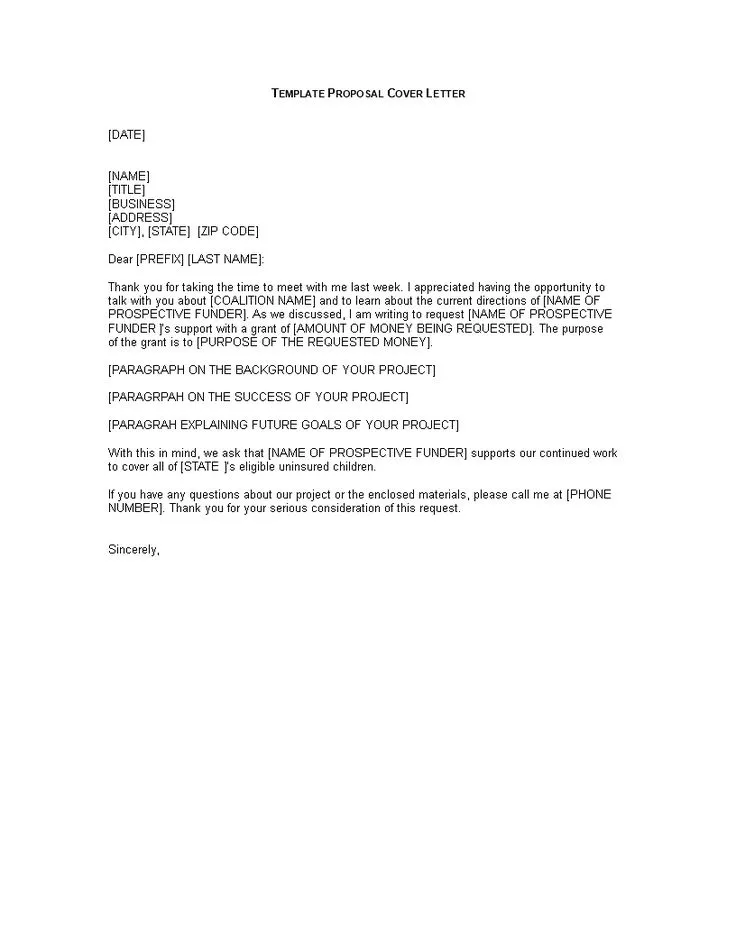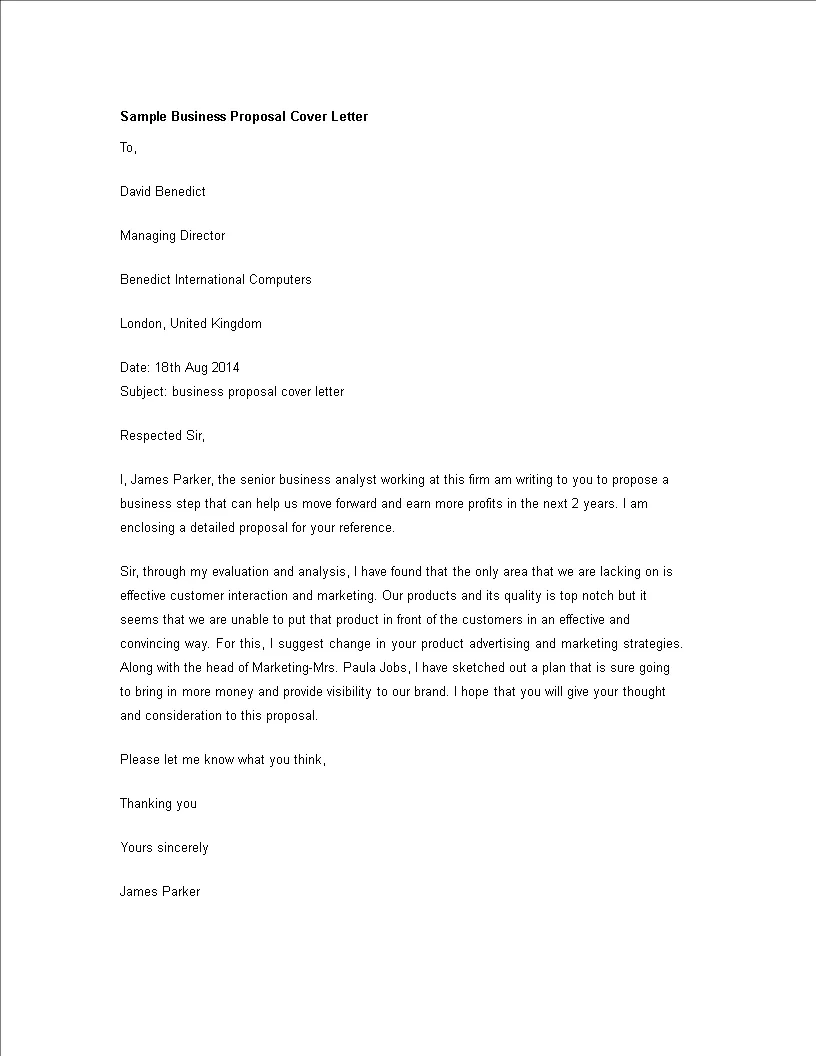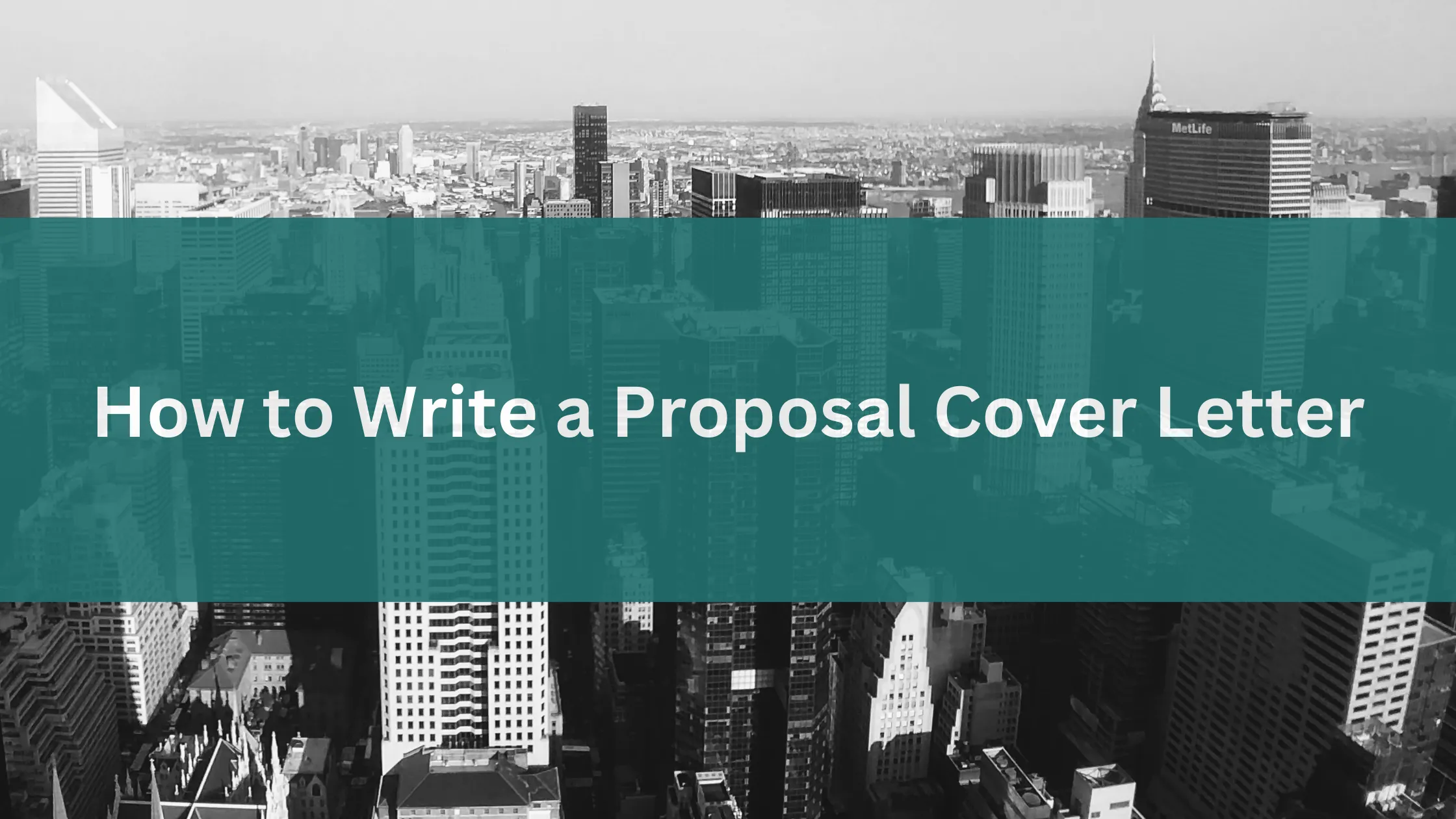What is a Proposal Cover Letter
A proposal cover letter is a concise and professional document that accompanies your proposal. It serves as an introduction to your proposal and provides the recipient with a brief overview of what you are offering. Think of it as the first impression of your entire proposal. It sets the tone for the rest of the document and should be crafted with care. A well-written cover letter grabs the reader’s attention and encourages them to delve into the details of your proposal. It’s your opportunity to immediately establish a connection with the recipient and demonstrate your understanding of their needs and how your proposal can meet them. It’s often the first thing the recipient will read, so it must be clear, concise, and compelling, guiding them to the core of your value proposition.
Why is a Proposal Cover Letter Important
The importance of a proposal cover letter cannot be overstated. It is the first point of contact, setting the stage for the entire proposal. A strong cover letter can significantly increase the likelihood of your proposal being read and seriously considered. It demonstrates your professionalism, attention to detail, and understanding of the recipient’s needs. It also allows you to highlight your understanding of the project or problem, building trust and credibility. In a competitive landscape, a compelling cover letter can differentiate your proposal from others, showcasing why your solution is the best fit. It serves as a bridge, connecting the reader to the core value and benefits that your proposal offers, making them want to learn more. This initial impression can set a positive tone for the entire proposal process.
Key Elements of a Compelling Cover Letter

A compelling proposal cover letter includes several key elements that work together to create a persuasive introduction. Begin with a personalized greeting, addressing the recipient by name if possible. Next, state the purpose of the letter clearly, mentioning the proposal’s subject and briefly summarizing the project or opportunity. Highlight your key qualifications and experience that align with the client’s needs, showcasing your understanding of their challenges. Briefly summarize your proposed solution and the expected benefits. End with a strong call to action, encouraging the recipient to review the proposal and offering your contact information for any questions. Remember to keep the tone professional, enthusiastic, and focused on the client’s needs. A well-structured and concise cover letter makes it easy for the reader to understand why they should choose your proposal.
Tailoring Your Cover Letter to the Proposal
Customizing your cover letter to the specific proposal is crucial for success. Generic cover letters often fail to capture the reader’s attention because they don’t show a genuine understanding of the project or client. Before writing, thoroughly research the client and the project requirements. Refer to their specific needs and pain points in your letter, demonstrating that you understand their challenges. Use the client’s language and terminology to build a stronger connection. Highlight the aspects of your proposal that directly address the client’s specific goals. Show how your unique approach will benefit them and differentiate you from other proposals. By personalizing your cover letter, you show the client that you value their business and are invested in providing a tailored solution to their needs. This level of detail and personalization increases the likelihood of a positive response.
Highlighting Your Unique Value Proposition
Your unique value proposition (UVP) is what sets you apart from competitors. Your cover letter is the perfect place to showcase it. Clearly articulate what makes your solution superior, whether it’s your expertise, innovative approach, cost-effectiveness, or ability to deliver results. Focus on the benefits the client will receive by choosing your proposal, such as increased efficiency, cost savings, or improved outcomes. Provide compelling evidence, like past successes or testimonials, to support your claims and build credibility. Make your UVP the focal point of your letter, ensuring that it is easily understood and memorable. The goal is to convince the client that your proposal offers the best possible solution and provides the greatest value for their investment. Highlighting your UVP makes a strong case for why the client should choose you.
Formatting Your Proposal Cover Letter

The format of your proposal cover letter impacts its readability and professionalism. Use a clean and professional font, such as Arial or Times New Roman, in a readable size. Keep the letter concise, aiming for one page if possible, using clear paragraphs and spacing. Include your contact information at the top or bottom. Ensure correct grammar, spelling, and punctuation; proofread carefully. Maintain a professional tone throughout the letter. Use a letterhead that includes your company logo and contact information. Break up the text with headings and bullet points to improve readability. By following these formatting guidelines, you present a professional and polished cover letter that is easy to read and leaves a positive impression on the recipient, making it easier for them to consider the proposal.
Proofreading and Editing Your Cover Letter
Proofreading and editing your cover letter are essential steps in ensuring it is error-free and effective. Errors, whether grammatical, spelling, or formatting, can undermine your credibility and make your proposal seem unprofessional. Carefully read your cover letter, checking for any mistakes. Use grammar and spell-checking tools, but also read the letter aloud to catch any awkward phrasing. Seek a second opinion from a colleague or friend to identify areas for improvement. Make sure the language is clear, concise, and persuasive. Verify that all names, dates, and details are accurate. A polished cover letter demonstrates attention to detail and professionalism. Investing time in proofreading and editing improves the quality of your letter, which ultimately enhances your chances of winning the proposal.
Following Up on Your Proposal
Following up on your proposal shows your continued interest and professionalism. Send a brief email or make a phone call a few days or a week after submitting the proposal, depending on the timeline specified. In your follow-up, reiterate your interest in the project and ask if the recipient has any questions. This gives you an opportunity to clarify any points or provide additional information. Be respectful of their time and decision-making process. If the recipient has questions, answer them promptly and thoroughly. If they haven’t made a decision yet, inquire about the timeline. Maintain a professional and positive attitude throughout the follow-up process. Following up demonstrates your dedication and increases your chances of securing the project. It is a final step in the process that can make a significant impact.
